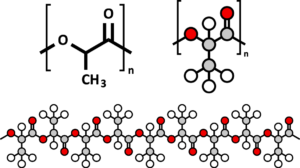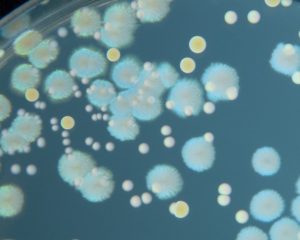Sustainable Production of Bioproducts and Biofuels
 Synthesis of proteins from genome and metagenome sequences, high throughput screening of their potential enzymatic activities, biochemical characterization of novel enzymes, crystallization and structural analysis using X-ray crystallography. Characterization of hydrolytic enzymes and enzymes for biopolymer synthesis.
Synthesis of proteins from genome and metagenome sequences, high throughput screening of their potential enzymatic activities, biochemical characterization of novel enzymes, crystallization and structural analysis using X-ray crystallography. Characterization of hydrolytic enzymes and enzymes for biopolymer synthesis.
Links to relevant research groups and projects:
 Bioproducts, i.e., products manufactured from renewable resources or using biological production systems, are the foundation of the new global low carbon bioeconomy. This bioeconomy will support many sectors, including commodity chemicals and materials, health, agriculture, and energy. BioZone researchers are developing biotechnologies (enzymes and cells) that can convert renewable feedstocks such as agricultural waste into chemicals, bioplastics, and other products.
Bioproducts, i.e., products manufactured from renewable resources or using biological production systems, are the foundation of the new global low carbon bioeconomy. This bioeconomy will support many sectors, including commodity chemicals and materials, health, agriculture, and energy. BioZone researchers are developing biotechnologies (enzymes and cells) that can convert renewable feedstocks such as agricultural waste into chemicals, bioplastics, and other products.
Links to specific research groups and projects:
- Industrial Biocatalysis Network
- Laboratory for Metabolic Systems Engineering
- Bioprocess Engineering Lab
- Bioproducts Research Lab
- Bioprocess and Enzyme Technology Lab
 Biological treatment systems for wastewater and air emissions. Biological conversion of wastes from forestry and other industries into renewable fuels, value-added chemicals, and renewable materials. Investigation of enzymes that degrade lignocellulose and their expression in plants. Enzymatic hydrolysis of starchy and lignocellulosic substrates.
Biological treatment systems for wastewater and air emissions. Biological conversion of wastes from forestry and other industries into renewable fuels, value-added chemicals, and renewable materials. Investigation of enzymes that degrade lignocellulose and their expression in plants. Enzymatic hydrolysis of starchy and lignocellulosic substrates.
Links to specific research groups and projects:
- Bioprocess Engineering Lab
- Bioproducts Research Lab
- Bioprocess and Enzyme Technology Lab
- University of Toronto Pulp and Paper Centre
Bioremediation and Wastewater Treatment
 Biological reductive dechlorination of chlorinated solvents, including chlorinated ethenes, ethanes, and methanes. Zero-valent iron reduction of chlorinated ethenes. Biodegradation of benzene, toluene, ethylbenzene, and xylenes under various electron-accepting conditions. Biological reduction of metals. Characterization of anaerobic mixed microbial communities and their enzymatic processes, including genomic and metagenomic analyses, metabolic network reconstruction and modelling.
Biological reductive dechlorination of chlorinated solvents, including chlorinated ethenes, ethanes, and methanes. Zero-valent iron reduction of chlorinated ethenes. Biodegradation of benzene, toluene, ethylbenzene, and xylenes under various electron-accepting conditions. Biological reduction of metals. Characterization of anaerobic mixed microbial communities and their enzymatic processes, including genomic and metagenomic analyses, metabolic network reconstruction and modelling.
Links to relevant research groups and projects:
 Molecular biological tools for reductive dechlorination, metal reduction, wastewater treatment granules and flocs. Laboratory techniques include polymerase chain reaction (PCR), quantitative PCR, reverse transcriptase PCR (RT-PCR), microarrays, next-generation sequencing, protein gel electrophoresis, and native protein polyacrylamide gel electrophoresis (PAGE).
Molecular biological tools for reductive dechlorination, metal reduction, wastewater treatment granules and flocs. Laboratory techniques include polymerase chain reaction (PCR), quantitative PCR, reverse transcriptase PCR (RT-PCR), microarrays, next-generation sequencing, protein gel electrophoresis, and native protein polyacrylamide gel electrophoresis (PAGE).
Links to relevant research groups and projects:
 Anaerobic digestion of organic waste has tremendous potential to address the economic and the environmental pressures facing most industries and municipalities. While anaerobic digestion is widely applied already in certain sectors, there is keen interest to expand its use to new waste streams, for example in the pulp and paper industry. Using a combination of pre-treatment methods and reactor configurations, combined with new molecular and analytical tools to gain mechanistic information on anaerobic processes, we are investigating alternative approaches to recover energy from waste liquid and solid streams.
Anaerobic digestion of organic waste has tremendous potential to address the economic and the environmental pressures facing most industries and municipalities. While anaerobic digestion is widely applied already in certain sectors, there is keen interest to expand its use to new waste streams, for example in the pulp and paper industry. Using a combination of pre-treatment methods and reactor configurations, combined with new molecular and analytical tools to gain mechanistic information on anaerobic processes, we are investigating alternative approaches to recover energy from waste liquid and solid streams.
Links to specific research groups and projects:
Cellular and Protein Engineering for Advanced Health Solutions
 Antibiotic resistance is a serious and growing health concern. Due to misuse or overuse of antibiotics, bacteria have evolved various mechanisms to reduce the effectiveness of these drugs. Many clinically-relevant species, including the ESKAPE pathogens Enterococcus faecium, Staphylococcus aureus, Klebsiella pneumoniae, Acinetobacter baumannii, Pseudomonas aeruginosa, and Enterobacter species contain either plasmids or chromosomal genes that produce enzymes with activities rendering antibiotics inactive.
Antibiotic resistance is a serious and growing health concern. Due to misuse or overuse of antibiotics, bacteria have evolved various mechanisms to reduce the effectiveness of these drugs. Many clinically-relevant species, including the ESKAPE pathogens Enterococcus faecium, Staphylococcus aureus, Klebsiella pneumoniae, Acinetobacter baumannii, Pseudomonas aeruginosa, and Enterobacter species contain either plasmids or chromosomal genes that produce enzymes with activities rendering antibiotics inactive.
The Structural Microbiology Lab is carrying out structure-function and inhibition studies of enzymes conferring antibiotic resistance to the glycopeptide drug of last resort vancomycin, aminoglycosides, streptogramin compounds and other antibiotics. We use X-ray crystallography as our primary tool to produce detailed insights into molecular structure of these enzymes and use this information to guide design of potent inhibitory compounds that can be used as antibiotic adjuvants for combined antimicrobial therapy.
Links to specific research groups and projects:





